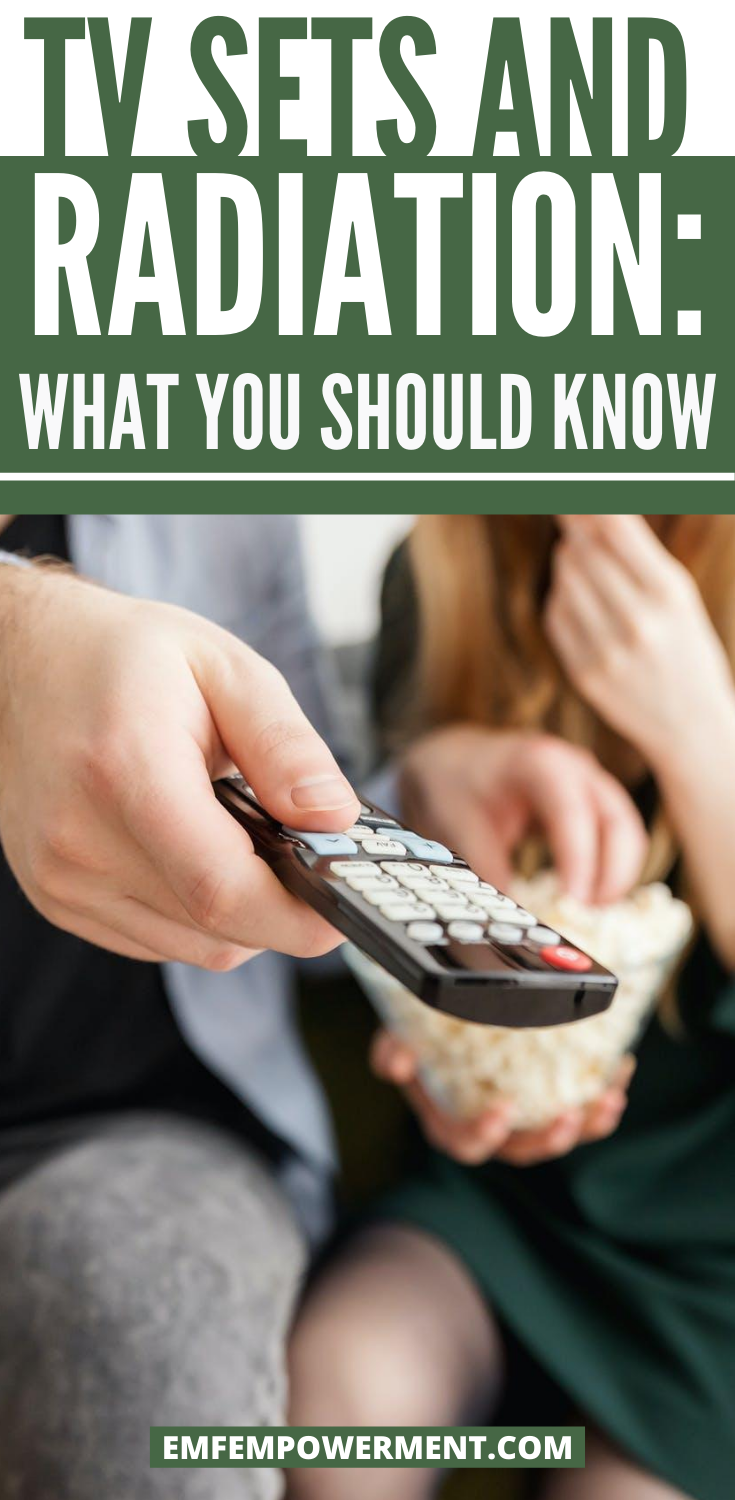On April 3, 1973, the first mobile phone was created. Since then, cell phone technology has…
TV Sets and Radiation: What You Should Know

*We may earn a commission for purchases made using our links. Please see our disclosure to learn more.
Television sets are a staple for many American households, with the average family owning at least two. Indeed, a TV is more accessible than ever before, as prices continue to drop and images become even more crisp and clear.
We rely on our TVs for entertainment and don’t really give much thought to their effect on our health. But perhaps we should. Like most electronic devices, televisions generate radiation. But what kind, and how much?
X-ray radiation and televisions
From the introduction of the first television set in the 1930s until the mid-to-late 2000s, cathode-ray tube (CRT) TV sets were the norm. These are the older-style, boxy television sets — the kind you may have had growing up.
CRT television sets display an image thanks to three electron-ray emitters positioned at the back of the set. Each electron ray represents a different primary color — red, green, or blue. Electron rays are transmitted by the emitters at a high rate of speed, creating the appearance of images on the screen. These images are not continuous, but rather, they are displayed so rapidly that they appear that way. Almost like a flipbook.
This process leads to the production of trace amounts of x-ray radiation. X-rays are a form of ionizing radiation, meaning they have the energy necessary to split an atom. And while they are highly useful in medical procedures, they can also cause cancer and other serious health problems.
The amount of x-ray radiation produced by a CRT television set is decidedly low. The screens and metal interior of the set are designed to keep much of the radiation in. Still, some does leak out. In the United States, the FDA set the legal limit for this leakage to .5mR/hr in 1969.
CRT television sets eventually went the way of cassettes and VHS tapes — they were replaced in favor of newer technology. LED and LCD televisions — more commonly referred to as flat screens — provide a clearer picture, allowing for high-definition images. And, perhaps best of all, they do not produce ionizing radiation.
Modern TVs and EMF radiation
Modern television sets may be leaps and bounds better than CRTs when it comes to radiation, but they are not flawless. These devices produce non-ionizing radiation, meaning the waves do not have the energy necessary to split an atom. More specifically, they can produce two types of non-ionizing radiation:
- Extremely-Low Frequency
- Radiofrequency
Both forms are recognized by the World Health Organization’s International Association for Research on Cancer as “possibly carcinogenic to humans.” Extremely-low frequency (ELF) electromagnetic field (EMF) radiation has been tied to childhood leukemia, while radiofrequency (RF) EMF radiation has links to glioma and heart tumors.
Most flat-screen TVs are energy efficient. This can save you money on your energy bill, but it also means the TV does not utilize all of the electricity that is sent to it. The excess is called dirty electricity, and it runs through the wires of your home. Dirty electricity is a form of ELF-EMF radiation.
Smart TVs, meanwhile, also generate RF-EMF radiation if they are making use of a WiFi signal. If your TV has a Bluetooth receiver, that is another potential RF-EMF source. Whenever the set sends or receives information — or scans for a signal or compatible device — it generates radiofrequency waves.
Measuring radiation from your TV
If you’re curious how much radiation your television set produces, you can measure it using an EMF meter. If you need help selecting one, we usually recommend the TriField TF2 because it’s reliable, accurate, and can easily detect all forms of EMF radiation. For other options, check out our article, The Best EMF Meters For Any Budget.
For this measurement, there are actually three different readings you want to take, at various distances away from the TV set. Take your measurements directly next to the set, then slowly move back and watch how the numbers change. The first reading should be with the set unplugged, the next with it plugged in but off, and the next with it powered on.
This reading is important because it allows you to see if your set is generating EMF radiation even while turned off. Some sets can only be fully powered off if they are unplugged. It also shows you the parts of a room that are impacted by TV-related EMF radiation. If you find that the EMF levels near your couch go up when the TV is powered on, it may be time to rearrange the living room.
Minimizing your exposure
- Use wired internet for your smart TV, if possible. WiFi-enabled TVs are becoming more and more the norm, but there are some hardwired options out there. Hardwiring your TV set with an ethernet cable allows for faster speeds, a more secure connection, and less EMF radiation. If your TV has an ethernet port, you can hardwire it. Vizio’s D-series is one great option that comes in a variety of sizes, and that can be easily plugged into a network cable.
- Turn your TV off at night, especially if it’s using WiFi. If your TV doesn’t have an ethernet port or that’s just not a realistic option for you, be sure to at least turn your TV off at night. You may need to unplug it in order for it to fully power down. For that matter, unplugging your whole WiFi router at night is probably not a bad idea — see our guide to find out why.
- Keep a safe distance between you and the television set while it’s on. The radiation levels are the highest two feet or fewer away from the TV. To keep your exposure levels in the safe zone, always sit back as far as you comfortably can from the device. Position your living room so that the seating area is at least a few feet away from the TV, and don’t let the kids pile on the floor next to the set to play video games or watch cartoons.
- Install a dirty electricity filter. Most newer TVs generate some amount of dirty electricity. It’s unavoidable, but there are things you can do to cut down on the impact. Dirty electricity filters, for example, help absorb and filter out the dirty electricity on a given circuit. Satic’s Pure Power Plug-In is one option. For others, or two learn more about dirty electricity, check out the Top Five Dirty Electricity Filters.
- Minimize the number of television sets in your home, and avoid putting one in your child’s bedroom. Avoid the temptation to put a TV set in each room of your home. The fewer, the better. Ideally, keep them out of the bedrooms, especially the kids’ rooms. Children are more susceptible to health problems from radiation exposure because of their thinner skulls.
Final thoughts
Television sets have come a long way when it comes to radiation. Modern TVs are no doubt better than their CRT counterparts, but they do still pose a small health risk. Basic safety precautions can help minimize that risk and allow for a safe and entertaining TV experience. 



